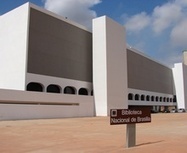You can form a cartel. Or you can ignore it all together.
-
If you want to understand the modern academy, it wouldn’t hurt to start at “impact factor.”
Every year, the company Thomson Reuters assigns every academic journal an “impact factor.” Impact factors measure, roughly, how often papers published in one journal are cited by other journals. It is an ecological measurement, in other words. You’d recognize the names of journals with the highest impact factors — Nature, Science, etc. — but the world of scholarly journals is enormous, and there’s crowding at the bottom.
Two stories today illustrate the problems with impact factors, and the difficulty of measuring knowledge through any metric.
First, Nature News revealed that a Brazilian citation cartel had been outed by Thomson Reuters. That’s right: a citation cartel.
The Brazilian government measures graduate schools based on the impact factor of the journals that those schools’ students publish in. Brazilian journals, many of which are newer, have low impact factors, so Brazilian graduate students often publish in journals abroad. This makes them and their graduate program look better, but it means the commercial benefit of Brazilian scholarship flows, in part, to non-Brazilian companies.
So editors at a set of Brazilian journals began linking to each others’ journals... a lot. The flurry of cross-citation made every journal appear more influential, and succeeded in raising the journals’ impact factor in 2011. For a moment, the scheme worked.
Until it didn’t.
Via Wildcat2030, Xaos



 Your new post is loading...
Your new post is loading...








no coments ....